Nothing quite complements the savory flavor of meat as well as the tang of smoke. Smoking meat is a low and slow cooking method that gives delicious flavor to any type of meat or other foods like cheese. With the right equipment and a little basic knowledge, it’s very easy to get started smoking meat. In this article, we’ll take a look at everything you need to get started as a master smoker.
Smoking Techniques
There are two main meat smoking techniques, a hot smoke and a cold smoke. They yield very different products. A hot smoke cooks the meat, while a cold smoke leaves the meat raw but smoke flavored.
Salmon is the perfect example. Lox is cold-smoked, while smoked salmon is hot-smoked. Both are salted and prepared the same way at essentially every step except the smoking process, and both are ready to eat. Most meats are hot-smoked and can then be sold as ready-to-eat products like sliced deli ham. It’s possible to cold smoke any kind of meat, but for food safety, all meat except fresh fish should be cooked before eating.
Smoking meat takes time. The longer you smoke the meat the stronger the flavor, and the total amount of time until fully cooked depends on the amount of meat and the temperature of the environment.
Hot smoking is a low and slow method of cooking. The cooking environment should never get above 250 degrees F and can be smoked as low as 180 degrees. Even small quantities of meat, like sausages, take at least an hour, and smoking can easily take all day. The slower you go, the juicier the final product.
Choosing The Wood
The type of wood that’s burning alters the flavor of the smoke. While any burning wood will bring a smoky flavor to the meat, there are lots of nuances. Depending on the wood available in your region, the best smoking woods are generally not the ones you use to build a fire or light a grill. You can buy bags of wood chips in other varieties specifically for smoking. These are available at any garden or hunting supply store.
Smoking woods can be broadly divided into two categories: light and sweet flavors vs. strong flavors. Light-flavored woods include apple, alder, maple, cherry, and other fruit tree woods. Since orchards must be pruned every winter to encourage fruit production, one can often buy fruit tree wood from a local orchard. It needs to cure, or dry, for a season before it is ready to smoke with. Light, sweet woods are good for smoking poultry, fish, cheese, and vegetables.
Strong-flavored woods most notably include hickory, oak, and mesquite. All three are best used for darker or stronger flavored meats, including wild game like venison. Hickory is often used with pork, creating the classic bacon and ham smoke flavor.
Mesquite is the strongest of all the smoke flavors and hot-burning, great for adding smoky flavor to something grilled hot and fast, rather than a true low-and-slow smoke.
There are a few types of wood that should not be used for smoking, since they have high resin content or other oils, and create sooty, unpleasant smoke. These include cypress, eucalyptus, elm, and conifers like pine, fir, spruce, and most redwoods with the exception of western red cedar.
Smoking salmon or other seafood on western red cedar planks is an ancient culinary practice of the indigenous Salish tribes on the Pacific coast.
No matter what kind of wood you are smoking with, be sure that it has not been treated in any way. Find more information about types of wood here.
Quality Of Meat
The most important component to the quality of a dish is the quality of the meat – how it was raised and what it ate. Although smoking has a strong flavor and can be used to conceal the stale flavor of old, freezer-burnt or otherwise low-quality meat, the best, healthiest and most delicious dishes are made of good meat.
The higher the quality of the meat, the better the flavor, but also the better for your body and health. Fats from animals raised outdoors and on pasture have higher levels of antioxidants, omega-3s, and fat-soluble vitamins like A and E. Any type of meat can be smoked. No matter what your ingredients are, the quality of your sourcing will raise the quality of your final product.
Spices And Rubs
As with all cooking, the best flavor requires seasoning. Pat the surface of the meat dry before seasoning to help it form a crunchy exterior and hold moisture.
Rub with salt and pepper at the very least, but other delicious spices for smoking include garlic, rosemary, thyme, paprika, chipotle, cumin, and sugar. You can also buy pre-made spice mixes. Consider the type of wood you are smoking with and whether a heavier or lighter spice compliments the flavor profile of the wood.
Brining And Tenderness In Hot Smoking
Since hot smoking is a slow, dry-cooking technique, lean meats have a tendency to get tough and leathery. There are a few effective techniques for adding tenderness. One is to add a shallow dish of water or another liquid like juice to the smoking environment – referred to as wet smoking.
This creates steam as well as smoke and helps keep lean meat tender. However, it may prevent a crust from developing – the crunchy exterior characteristic of smoked meats often considered culinarily desirable.
The other – more classic – method of tenderizing smoked meat is brining or salting. Brining is immersion in a salt solution – usually salt and sugar, for flavor. Salt is both a tenderizer and a preservative, so it has long been considered a perfect pairing with smoked meats. Ham, smoked salmon, and bacon are all familiar, beloved foods that use the salt and smoke combination. While salmon and bacon are both fatty, ham is very lean, so the salt serves as a tenderizer.
Home salting meat is an experiment in balance and personal taste. While recipes can help you get the ratio of salt to sugar to meat correct, I’ve found it nearly impossible to predict the saltiness of the final product without a test batch.
My advice is that the first time you brine or salt meat, don’t plan to use the salt and smoke to make your product shelf-stable. Err on the side of less salt and plan to refrigerate or freeze the product. Erring on the other side produces incredibly salty meat.
If you do over-salt, raw meat can be soaked and rinsed to remove salt, but once it’s cooked you’re out of luck.
Methods And Equipment
There are lots of different set-ups and types of equipment for smoking. When it comes down to it, they are all just different ways of burning wood near meat. Rather than using any wood, most smoking methods use wood chips – often hickory or apple, to give a particular flavor.
Campfire
The oldest and simplest method for smoking is over the coals of an open fire. While some people consider this grilling or roasting, rather than smoking, depending on the temperature of the coals, I personally think it has to be included.
It gives that smoky flavor to the meat, and with care to keep the coals even, it can be a low-and-slow cooking method. As the coals burn, add logs to the side of the fire pit away from the meat and push the new coals under the meat to keep the heat steady.
You can put wood chips in the coals for flavor, but they are likely to flame and cause the meat to burn or cook too fast. Dowse any flame-ups with water to prevent the meat from charring. Since it is unusual to build a campfire with hickory or applewood, these kinds of smoked meats have a less refined flavor to the smoke. Pine-smoked meat is especially strong tasting, but it is all part of the campfire charm.
The most basic equipment needed for this method is a skewer or sharp stick. You can also use a spit or a cooking grate. Spits and grates can be improvised and simple or can be bought specially with height-adjustment options which help control the speed and temperature of the cooking.
Barbeque Grills
A great backyard way to smoke meat is on a barbeque grill. Although grills are designed for cooking hot and fast (“grilling”), either a charcoal or propane grill can be used to smoke low and slow. Gas grills, since they don’t have coals to put wood chips, come with smoke boxes where you put chips that will smolder in the heat from the propane and create a smoky environment while the lid is on the grill.
You can even improvise a smoke box out of an aluminum tray if your propane grill doesn’t come with one included. An advantage to propane grills is that the temperature is easy to adjust and maintain at a low temperature.
Charcoal grills, like wood fires, aren’t as easy to maintain at an exact temperature. They require more supervision. The key is to build the charcoal fire on one side of your barbeque, with the meat on the other side, so it isn’t directly over the fire. You also have to orient your grill with the wind and the vents so that the airflow draws the smoke across the meat before it leaves the vents.
Put the vent in the barbeque lid directly above the meat and build the fire on the windward side, making sure there are bottom vents under the fire. Remember, heat rises, so a barbeque is always drawing air from the bottom and expelling it at the top.
Smokers
A smoker – that is, a piece of equipment specifically designed for smoking – is the most ergonomic and precise way of smoking. These are electric-powered machines with a heating coil under a pan of wood chips that can be set to an exact temperature.
Smokers come in a wide range of sizes and prices. A small, home smoker can run less than $200 dollars, while large smokers are in the thousands. Always follow the manufacturer’s instructions and only use in well-ventilated or outdoor areas.
There is a specific type of smoker or smoking apparatus for cold smoking, where the meat is put in a refrigerated compartment and smoke is piped in from a burning source outside of the compartment.
Cold smokers can be bought as complete machines just like electric hot smokers, but you can also build one yourself. Use an old refrigerator that still works, cut a hole in the side and pipe smoke in with six or eight-inch aluminum piping from whatever grill you have available. By putting the meat in the refrigerator, it will stay cold and raw during smoking.
Food Safety
Keep all your cooking surfaces clean and use sharp knives. Remember that anything that produces smoke also produces deadly carbon dioxide. Smoking meat indoors could kill you.
When hot smoking, it is important to raise the internal temperature of the meat to 140 degrees Fahrenheit or higher for poultry. Use a meat thermometer in the thickest part of the cut. Serve within four hours of taking meat off the smoker.
When cold smoking, it is equally important that the temperature not rise above 40 degrees Fahrenheit for more than four hours. Of course, even the best-handled and well-prepared raw fish carries the risk of transmitting foodborne illness.
Smoking is a preservation method, especially when paired with salt. Smoked and salted meat will keep in the refrigerator for weeks, and in my personal experience, even months, but I don’t want to make too bold of a recommendation. And fully cured meat – that is salted, smoked, and dried – is shelf-stable for up to six months, although it may begin to taste rancid or stale.
With a little practice and trial and error, you will begin to master the ancient art of smoking meat. If you are having trouble getting started, invite a friend or two over and make an event out of it – in the meantime, you could whip up a batch of sausages to throw on the grill, using our guide to sausage making. Smoked meat is the perfect centerpiece of a summer barbecue, and it is an easy skill to learn to impress all your friends.


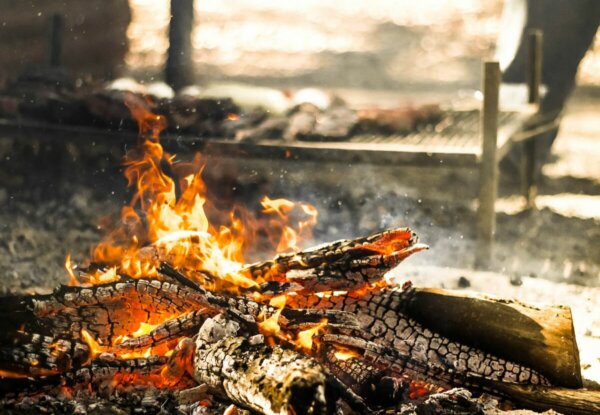





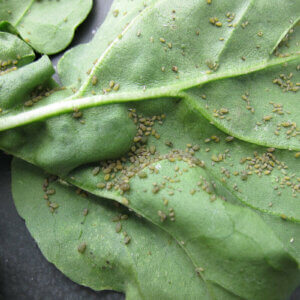














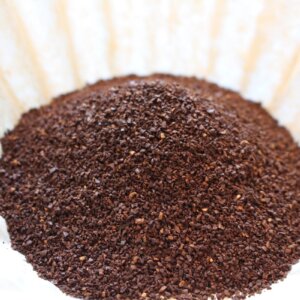
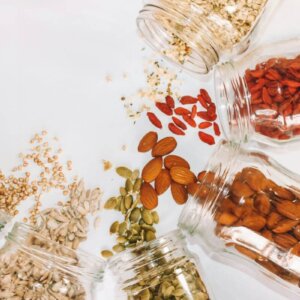



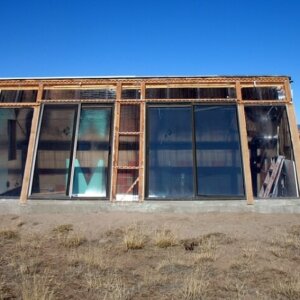















great read! what’s your personal favourite rub for pork and do you recommend a wood or charcoal smoker?